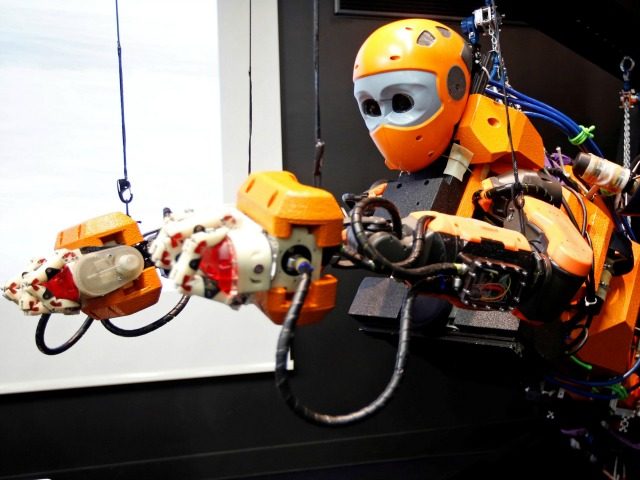Thanks to a joint venture between a university in Saudi Arabia and Stanford University, scientists have used a robotic mermaid to successfully plunder an untouched 17th century shipwreck off the coast of France.
The aquatic explorer was originally conceptualized by scientists at KAUST — King Abdullah University of Science and Technology, in Saudi Arabia — to monitor deep coral reefs in the Red Sea at depths far below human capability. With current remote operated vehicles — or ROVs — lacking the dexterity needed to examine such delicate coral colonies, KAUST Professor of Electrical Engineering Khaled Salama reached out to acquaintances at Stanford University in hopes of creating a new robotic interface system.
Together, the teams developed OceanOne, a robot capable of performing intricate underwater tasks and arguably superior than traditional underwater ROVs in many ways. Reducing the robot’s size to five feet in length boosted its agility. In addition, they chose to immerse the electronics in oil, eliminating the compression that happens when electronics are waterproofed to keep air trapped inside. As a result, the robot’s maximum diving depth reached 2000m, or about 6562 feet.
To put that into perspective, the world records for scuba and hyperbaric dives are 1,089 feet and 2,300 feet, respectively. OceanOne far surpasses human diving capabilities while eliminating the multitude of hazards and risks to human divers.
“OceanOne will be your avatar,” says Oussama Khatib, a Computer Science Professor at Stanford. “The intent here is to have a human diving virtually, to put the human out of harm’s way. Having a machine that has human characteristics that can project the human diver’s embodiment at depth is going to be amazing.”
Controlled remotely by joystick, the robotic mermaid is outfitted with “human-like” stereoscopic vision allowing the pilot to accurately judge depth perception while also helping the humanoid to manipulate small objects. While submerged, OceanOne uses sensors to gauge surrounding currents or turbulence, and adjusts itself accordingly using its eight thrusters. In the event that the humanoid’s body moves or drifts, its fully articulated arms automatically adjust to keep its hands steady as it works. In addition, the robot can use the series-elastic arms to brace itself for impact if its thrusters are not able to slow it down.
The robot’s hands are fitted with force sensors to relay haptic feedback to the pilot, sharing the sense of touch with the humanoid’s controller. “You can feel exactly what the robot is doing,” Khatib says. “It’s almost like you are there; with the sense of touch you create a new dimension of perception.”
With guidance from deep-sea archaeologists who had studied the site, OceanOne’s first field test was the exploration of La Lune — “The Moon” — King Louis XIV’s flagship which sank 20 miles off the coast of France in 1664. With Khatib’s assistance, the robotic diver recovered a grapefruit-sized vase from the 350 year old wreckage.
“We connect the human to the robot in very intuitive and meaningful way. The human can provide intuition and expertise and cognitive abilities to the robot,” said Khatib. “The two bring together an amazing synergy. The human and robot can do things in areas too dangerous for a human, while the human is still there.”
As it is still a prototype, OceanOne will be returned to Stanford University, where Khatib and his colleagues will continue developing the underwater archaeologist. And after such a successful maiden voyage, the researchers are hoping to build multiple units that can dive together as a team.
Whether deployed individually or as a fleet, OceanOne has proven to be a viable alternative to human divers for dangerous or impossible tasks, such as deep underwater research, exploration of undersea mines, maintenance of oil rigs and pipelines, and beyond — perhaps to the bottom of the ocean itself.

COMMENTS
Please let us know if you're having issues with commenting.